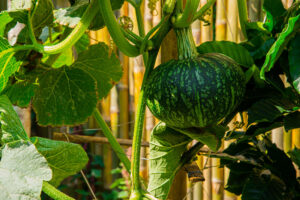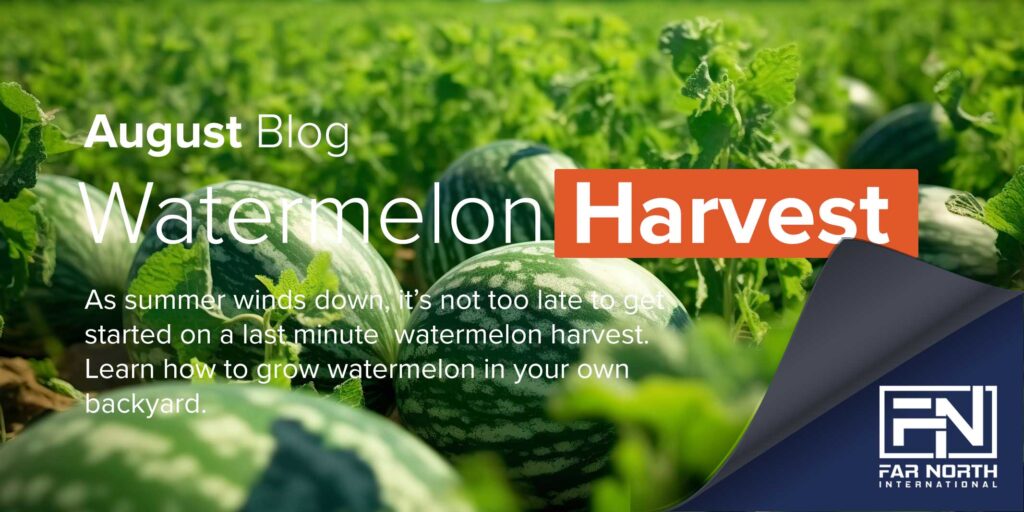The month of August might seem like the time when summer is winding down. But now might be the perfect time to start growing some watermelon in your own backyard Yes, that’s right—watermelon. It’s not too late to start growing your own watermelon in your backyard. In this blog, we will talk about how to pick your watermelon starters, sprout your seeds, and how to keep them growing all month long.
 When it comes to picking which type of watermelon to grow in your garden, it’s important to take into consideration your geographic location, time of year, and growing conditions. Some beginner friendly watermelon varieties include sugar baby, yellow baby, and baby sweet watermelons all have shorter growing times and can be harvested in as little as 65 days.
When it comes to picking which type of watermelon to grow in your garden, it’s important to take into consideration your geographic location, time of year, and growing conditions. Some beginner friendly watermelon varieties include sugar baby, yellow baby, and baby sweet watermelons all have shorter growing times and can be harvested in as little as 65 days.
Planting watermelon seeds directly into your garden is preferable in August, as they require warm soil temperatures around 75-85°F. Create mounds or raised beds to improve drainage and promote healthy root development. Sow the seeds approximately 1 inch deep, leaving enough space between each plant to accommodate their sprawling nature. Water generously immediately after planting, ensuring the seeds are kept moist throughout the germination process.
 To keep your crop fully supported and protected, you can utilize a chain link fencing enclosure. This is essential for protecting your watermelon patch from critters and safeguarding the fruits as they grow. Chain link fencing is a durable and reliable option for this purpose. Here’s how you can construct an enclosure using chain link fencing.
To keep your crop fully supported and protected, you can utilize a chain link fencing enclosure. This is essential for protecting your watermelon patch from critters and safeguarding the fruits as they grow. Chain link fencing is a durable and reliable option for this purpose. Here’s how you can construct an enclosure using chain link fencing.
First, measure and mark the perimeter of your desired watermelon patch. Next, dig post holes at regular intervals around the marked perimeter. Then, insert the fence posts into the holes, ensuring they are securely set. Next, stretch the chain link fencing along the posts, using wire ties or clips to fasten it securely. Lastly, add a gate for easy access to your watermelon paradise, ensuring it closes tightly to keep critters out.
Watermelons are heavy feeders and require regular watering and nourishment. Here are some essential care tips. Water consistently, ensuring the soil remains moist but not waterlogged. Watermelon plants need around 1-2 inches of water per week. Apply a balanced fertilizer once the vines start to develop. Mulch around the base of the plants to retain moisture, suppress weeds, and regulate soil temperature. Train the sprawling vines to grow within the enclosure, providing support when necessary.
 Watermelons are ready for harvest when the tendrils near the fruit turn dry and curl up, the underside of the fruit turns creamy yellow, and the fruit sounds hollow when tapped. Cut the fruit carefully from the vine, leaving a short stem intact. Be sure to enjoy your fresh crop of watermelons and taste the fruits of your labor. We love using fresh garden watermelons in summer salads, but you can also eat them plain, or use them in your favorite summer drinks.
Watermelons are ready for harvest when the tendrils near the fruit turn dry and curl up, the underside of the fruit turns creamy yellow, and the fruit sounds hollow when tapped. Cut the fruit carefully from the vine, leaving a short stem intact. Be sure to enjoy your fresh crop of watermelons and taste the fruits of your labor. We love using fresh garden watermelons in summer salads, but you can also eat them plain, or use them in your favorite summer drinks.

